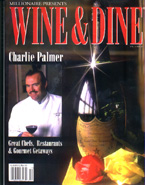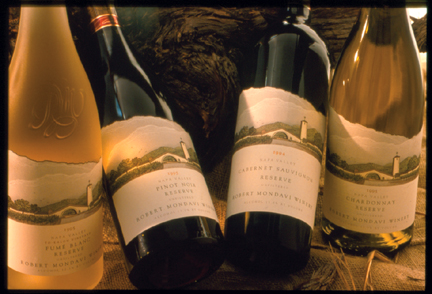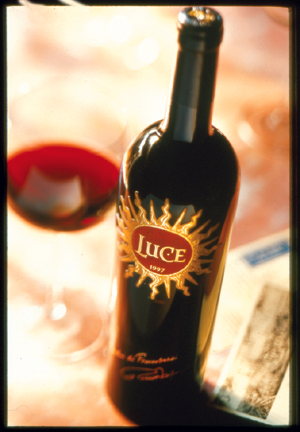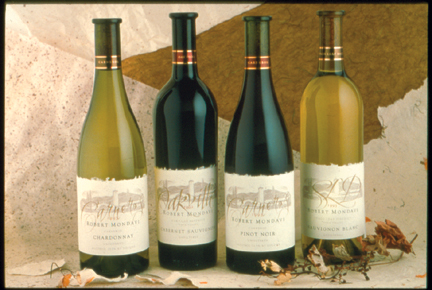

 |
 |
THE WINE CONNOISSEUR
 A PRIMER FOR NON-AFFICIONADOS by Kaya Morgan
A PRIMER FOR NON-AFFICIONADOS by Kaya Morgan
We would all like to believe we’re connoisseurs. However, there is a better and a worse to wine, as with anything, and an appreciation of the difference is discernible to anyone willing to take the time to acquire the knowledge and experience. So, whether you’re trying to impress your dining partner on a first date at an exquisite restaurant, planning a formal dinner party or simply want to educate your palate, this short tour is designed to provide you the basics.
The first thing about selecting wines is that, until you become an educated connoisseur, there are always experts to rely on who can assist you in making the right selection for any occasion. Fine dining establishments with a good selection of domestic and imported vintages in their cellars almost always have a sommelier, or perhaps a certified wine server, to answer questions about which wine to order with your menu selections.
When shopping for wines to stock your home wine cellar, do become a frequent customer at your local wine specialty shop. Ideally, a good wine merchant can be extremely accommodating and willing to share his or her expertise about the almighty grape. Since wines only become available in either spring or fall, and there is only one vintage per year, learning its potential can be extremely important.
 When buying old wines, be especially wary. Price and scarcity are highly volatile factors when it comes to rare bottles of wine, and the merchant who buys and sells these old wines is the player holding all the cards. Make sure the merchant is reputable and that you know what you’re buying. Remember, it’s a gamble because some wines can be kept a bit too long.
When buying old wines, be especially wary. Price and scarcity are highly volatile factors when it comes to rare bottles of wine, and the merchant who buys and sells these old wines is the player holding all the cards. Make sure the merchant is reputable and that you know what you’re buying. Remember, it’s a gamble because some wines can be kept a bit too long.
Of course, a visit to the wine-producing regions of California, New York, Tuscany, or France to sample the local vintages can often produce amazing results in how quickly you can learn about a wide range of varietals. One of the most important things you will learn is that quality in wine is dependent on good grapes. It is impossible to make good wine from bad grapes, and good grapes are produced in good vintages.
 When it comes to grapes for winemaking, the choices become more complicated than can be explained by simply dividing the universe into reds and whites. The four basic categories of wines include apértifs, sparkling wines, sweet (also known as dessert) wines, and varietals and table wines.
When it comes to grapes for winemaking, the choices become more complicated than can be explained by simply dividing the universe into reds and whites. The four basic categories of wines include apértifs, sparkling wines, sweet (also known as dessert) wines, and varietals and table wines.
The apértif wines, traditionally served before meals, include champagne, dry sherry and vermouth, but many rosé and white wines, especially a California Riesling or New Zealand Sauvignon Blanc, are suitable apértifs as well. While sparkling wines can be served before, during or after the meal and are usually associated with festive occasions, sweet wines, served after dinner, include ports, sweet sherries, sweet vermouth, and the "late harvest’ wines. Varietal and table wines are served during the meal and fall into three sub-categories — red, white and blush (rosé) wines.
 Vintners report that the demand for varietal wines is accelerating as American wine lovers’ consumption of premium varietals is skyrocketing. The most popular of the varietals today are Chardonnay, Cabernet and Merlot. Of course, there are many other popular varietals — including Pinot Noir, Zinfandel, Sauvignon Blanc and Beaujolais-style — that you will want to become familiar with.
Vintners report that the demand for varietal wines is accelerating as American wine lovers’ consumption of premium varietals is skyrocketing. The most popular of the varietals today are Chardonnay, Cabernet and Merlot. Of course, there are many other popular varietals — including Pinot Noir, Zinfandel, Sauvignon Blanc and Beaujolais-style — that you will want to become familiar with.
Knowing the language of wine is important too. When describing wines, you will frequently hear a handful of words such as "varietal character," "bouquet," "balance," and "tannins." Mastering just these small definitions (see the sidebar) can make you appear a true connoisseur. Also, the following guidelines should prove helpful:
With hors d’oeuvres, a clean, fruity, sharp white wine is fairly safe, but a Muscadet or Riesling also can be divine. Generally speaking, with fruits (except pineapple) and most cheeses, a Sauterne is recommended. With antipasto, an Italian Chianti is appropriate, but a dry or medium white Soave would be delightful as well. If you’re serving shrimp or crabmeat without heavy sauces, try a dry to medium (or slightly sharp) white, such as a California Sauvignon. But with caviar, iced vodka or champagne are the traditional.
When choosing a wine with pasta, everything depends on the sauce. With cream sauce, Chardonnay; with basil pesto, Sauvignon Blanc. Red meat and tomato-based sauces are best complemented with Italian red wines, Zinfandels and Merlots. With seafood sauce, compliment with a Sauvignon Blanc or a Soave. With pizza, any Italian red Chianti, Dolcetto or a Zinfandel are recommended.
For Indian curries, spicy Tai or Chinese dishes, a dry to medium dry German or Washington State Riesling would be perfect. Chicken dishes in bland preparations are suitably paired with white wines such as Chardonnay, Sauvignon Blanc and Chenin Blanc, but heavier sauces or rich garlicky-chicken specialties demand a heartier red wine such as a Merlot or Pinot Noir.
 With roasted or grilled red meats, red wines are the rule, from Cabernet to Merlot and Zinfandel, as well as the traditional red Bordeaux. With lighter meats — ham, veal and pork — whites like Chardonnay, Soave or Sauvignon Blanc are popular, as are blush wines such as a Pinot Noir Rosé, White Zinfandel, or a rosé from Cabernet. But, with richer sauces, choose a good, red Merlot from California or Washington State Cabernet Sauvignon.
With roasted or grilled red meats, red wines are the rule, from Cabernet to Merlot and Zinfandel, as well as the traditional red Bordeaux. With lighter meats — ham, veal and pork — whites like Chardonnay, Soave or Sauvignon Blanc are popular, as are blush wines such as a Pinot Noir Rosé, White Zinfandel, or a rosé from Cabernet. But, with richer sauces, choose a good, red Merlot from California or Washington State Cabernet Sauvignon.
Be adventurous! Before you know it, you will be an expert – or, at least, you’ll know what you like as you explore the incredible world of wine.
Wine Glossary:
Acidity – Indicates quality of tartness, sourness, or sharpness to the taste due to the presence of fruit acids. Acid wines can compliment seafood, for example, the same way a squeeze of lemon does.
Balance – When all the components of oak, tannin, acid, etc., are in harmony with the varietal fruit flavor.
Body – The impression of weight or fullness (roundness) on the palate. "Light-bodied" wines tend to be low in alcohol content, tannin, and extract. "Full-bodied" wines are tannic and higher in alcohol.
Bouquet – The fragrance that develops in a wine as it ages or matures. Bouquet is different from aroma, which refers to the fragrance of a young, undeveloped wine.
Dry – a wine with little or no residual sugar; the opposite of sweet.
Elegant – Refers to a complex wine with refinement, not a heavy, robust wine. "Fruity" is often used to describe wines that have the smell and flavor of fresh grapes. These wines are not necessarily sweet.
Residual Sugar – Natural grape sugar left in the wine by stopping the fermentation process prior to the wine becoming totally dry.
Tannin – The naturally occurring dry, puckery, and sometimes bitter components of wine are collectively known as tannins. Mostly found in red wine, they occur in fruit skins and strong tea, as well.
Varietal Character – The specific and unique combination of color, taste, and texture of a wine, which is directly attributed to the grape variety.
Wine Glossary © Sebastiani Vineyards
Sonoma, California

All Rights Reserved © 1998-2001
Press Coverage | VentureCapital | Business Development | Venture Opportunities | Resources | Contact Us | Investor Extras | Home